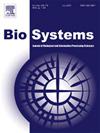水蝽环翅双爪龙翅面抗湿特性。
IF 2
4区 生物学
Q2 BIOLOGY
引用次数: 0
摘要
环环双爪蝽是一种水生水虫,主要生活在池塘和湿地。通常被称为咬脚趾虫或电光虫,若虫和成虫都捕食水中的其他无脊椎动物。为了寻找食物和配偶,成虫经常在水体之间飞行,形成了两栖的生活方式。很可能因为这样的生活方式,它们进化出了翅膀上的结构,使它们能够保持干燥并能够飞行。本文报道了前、后机翼的抗润湿性能。我们发现,翅膀具有复杂设计的刚毛分层结构,微毛和一个“微结构井”,点缀着棒状突起。机翼具有极强的超疏水性,水接触角在1600到1700之间。对翅膀的FTIR分析表明存在疏水性基团。因此,由于这两种原因,复杂的表面特征以及可能由于翅膀上的疏水性基团而导致的低表面能,水虫可以在其翅膀中保持高度干燥。我们在讨论这些发现的背景下,翅膀的适应如何有助于昆虫在其两栖生活方式中茁壮成长。本文章由计算机程序翻译,如有差异,请以英文原文为准。
Anti-wetting wing surface characteristics of a water bug, Diplonychus annulatus
Diplonychus annulatus (family Belostomatidae and order Hemipetra) is an aquatic water bug, adapted to ponds and wetlands. Commonly referred to as toe-biters or electric-light bugs, both the nymph and the adults prey on other invertebrates in the water. In search of both food and mates, the adults frequently fly between water bodies, leading to an amphibious lifestyle. It is likely that because of such a lifestyle, they have evolved structures on their wings that enable them to be dry and be able to fly. In this paper, we report the anti-wetting property of the fore and hind wings. We show that wings, have intricately designed hierarchical structures of setae, microtrichia, and a “micro-architectured well” interspersed with club-like projections. The wings were extremely superhydrophobic with water contact angle ranging between 160° to 170°. FTIR analysis of the wings indicated the presence of hydrophobic groups. Thus, due to both, the intricate surface features as well as possibly the low surface energy due to the hydrophobic groups on the wings, the water bug can maintain a high degree of dryness in its wings. We discuss these findings in the context of how wing adaptations contribute to the insect's ability to thrive in its amphibious lifestyle.
求助全文
通过发布文献求助,成功后即可免费获取论文全文。
去求助
来源期刊

Biosystems
生物-生物学
CiteScore
3.70
自引率
18.80%
发文量
129
审稿时长
34 days
期刊介绍:
BioSystems encourages experimental, computational, and theoretical articles that link biology, evolutionary thinking, and the information processing sciences. The link areas form a circle that encompasses the fundamental nature of biological information processing, computational modeling of complex biological systems, evolutionary models of computation, the application of biological principles to the design of novel computing systems, and the use of biomolecular materials to synthesize artificial systems that capture essential principles of natural biological information processing.
 求助内容:
求助内容: 应助结果提醒方式:
应助结果提醒方式:


